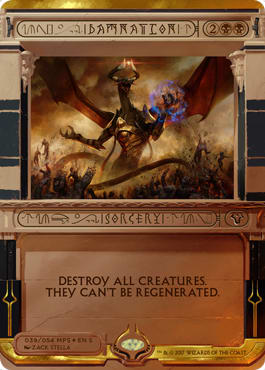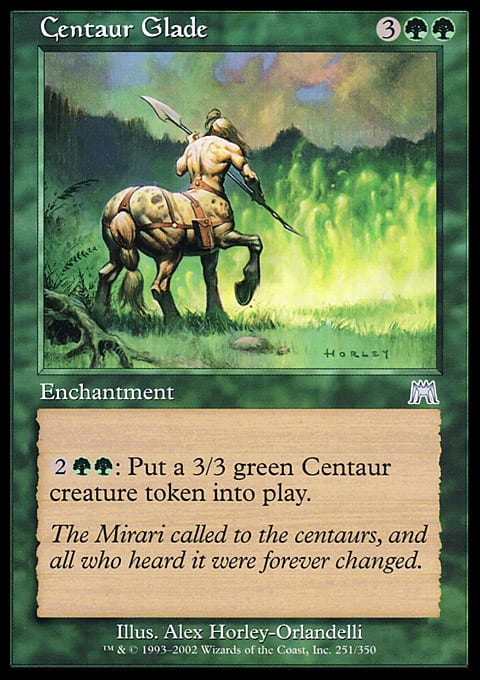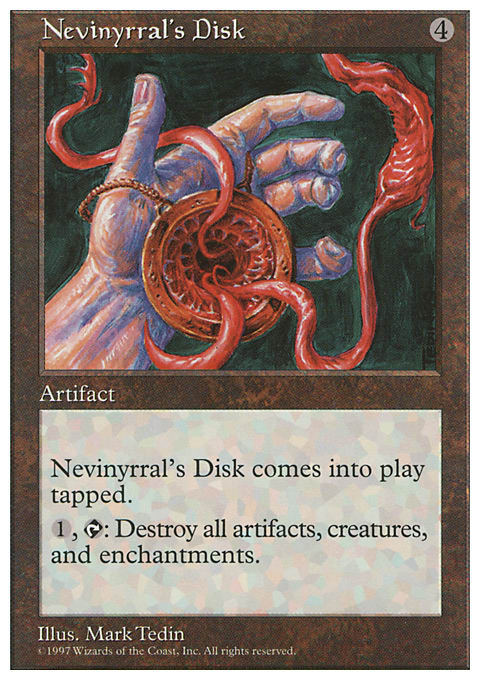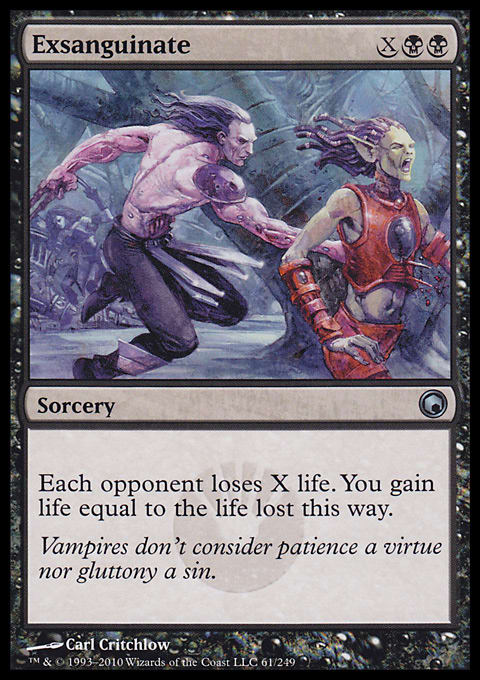This is my hundredth article since leaving StarCityGames, and I thought I’d celebrate with a topic near, dear, and fearful to the casual heart: how to deal with sweepers. From Nevinyrral's Disk in Limited Edition Alpha to Languish in the new Magic Origins set, there have always been plenty of ways for your enemies to destroy everything you’ve worked so hard to put onto the battlefield. Many times, I have had victory within my grasp and then someone swept the board clean and I had to spend an hour clawing my way back to the win. Sometimes, a Damnation can leave you wanting to cry or, if you’re like me, cursing out the mage who cast it (hence the weeping and bleeping). Here are some tips for minimizing that frustration.
Don’t Overcommit
Let’s start with the easiest: The more permanents you have, the more vulnerable you are to sweepers, so don’t overplay your hand. Make sure you always have something in reserve, preferably a nice fatty in your hand that you can drop after a sweeper and resume the beatdown. This is easily understood in theory but hard to do in practice—sometimes, you just don’t have enough cards. However, it is the first and easiest way to avoid being blown out by sweepers.
You have to remember that sweepers in multiplayer are different from sweepers in a duel. In a duel, the aggro player loses massive card advantage when the control player casts Mutilate, and after the second sweeper, he or she might not have enough resources left to fight. In multiplayer, card advantage is much more relative, and the trick is to lose fewer resources than your other opponents. Take a page from Bruce Richard’s book, and play just enough creatures to deter attacks from the most aggressive players. Then, when the control mage wipes the board, you will still gain card advantage over most of your opponents without having suffered from the attacks that the control mage had to endure.
Commander players have a big advantage over casual sixties: the commander. One of the biggest rookie mistakes in the format is not casting your commander enough. Remember that you have this resource, cast it as often as practical, and build up resources in your hand while your opponents struggle to find answers to your commander.
Finally, don’t forget to pay attention to your opponents as well as their cards. What they play, how they tap (or don’t tap!) their lands, their body language, and so on can all be clues that they are trying to lure you into a punishing Life's Finale. Reading your opponent is essential to success in duels, but it is also an underrated skill in multiplayer.
Protection
In general, there are four ways to protect your board presence from sweepers:
- Resistance — Your dudes don’t die to sweepers (indestructible, regeneration, blinking, etc.).
- Recovery — You can reestablish your board position faster than anyone else (haste, flash, stupid amounts of ramp and/or card-draw, etc.).
- Reanimation — Your dudes die to sweepers, but they come back (playing black . . . mwaahahaahaaaahh!).
- Repetition — You have permanents that generate creatures—a.k.a. cockroaches—so that you aren’t really suffering card disadvantage (Bitterblossom, Centaur Glade).
Note that protection doesn’t necessarily mean protecting the creatures you have in play; the important thing is to protect your board position, tempo, and card advantage. That’s why some of the cards I talk about help you to rebuild and reapply the pressure more quickly than your opponents can handle, some help to ensure that you don’t lose too many cards when your army is hit with a Necromantic Selection, and others replace your creatures with tokens. Of course, it might be easier for you if the sweeper never happened at all, but that’s not usually realistic, so try to focus on the big picture.
Here is my take on the top five protection options for each color. As always, this list is definitive and in no way reflects my personal bias or the first ideas I pulled out of my ass.
Red — Anger, Dragon Roost, Flayer of the Hatebound, Magnivore, Zodiac Dragon2
Green — Caller of the Claw,3 Fecundity,4 Spearbreaker Behemoth, Symbiotic Wurm, Wrap in Vigor
White — Death or Glory, Faith's Reward, Field of Souls, Rootborn Defenses, Twilight Shepherd
Blue5 — Back from the Brink, Evacuation, Fool's Demise, Leyline of Anticipation, Teferi's Veil
Artifact — Cauldron of Souls, Cold Storage,6 Darksteel Plate, Stuffy Doll, Soul of New Phyrexia
Some of these options are better than others, but with so many different kinds of sweepers, there is no one-size-fits-all solution. Your protection options need to be as diverse as the threats. In particular, the release of Ugin, the Spirit Dragon challenges a lot of traditional protection. Being indestructible or having a death trigger is no longer enough; you might need to sac your whole team before they are exiled by Ugin’s –X ability, and then you can bring them back at the end of turn with Faith's Reward or replace them with tokens from Fresh Meat.
As a general rule, try to include some combination of Resistance, Recovery, Reanimation, and Repetition options. Any one strategy can be overcome (take it from someone who lives for reanimation:7 A single card can nerf your entire protection plan!), but a combination of two or three strategies can really frustrate your opponents. Get them feeling like they're playing whack-a-mole with their expensive sorceries, and you’ll soon knock them out.
Planeswalkers
A lot of people say that Planeswalkers are weak in multiplayer, but whether or not that’s true, Planeswalkers are only vulnerable because there are so many creatures on the board. If there are too many sweepers in your meta, there must be fewer creatures on the board, which means it is time for your Planeswalkers to shine! There are only a handful of board wipes that kill both creatures and Planeswalkers (most notably Oblivion Stone and Planar Cleansing), and some kill everything except Planeswalkers (Nevinyrral's Disk, Pernicious Deed, Akroma's Vengeance), so sweepers usually create a safe, nurturing environment for your Planeswalkers.
For some of you, there might just be one control mage in your metagame who is using sweepers to make life miserable for the rest of the table, and in that case, Planeswalkers become even better. Most Planeswalkers are designed to take out a single opponent (think Jace, the Mind Sculptor, Nicol Bolas, Planeswalker, or Garruk, Apex Predator), so if one control player is oppressing everyone else, your other opponents might leave your Planeswalker alone—maybe they know Nicol Bolas’s ultimate is going to hit that dominant player.
Reach
Red gets a bad rap as the worst color in Commander (barring mass land-kill), but the ability to burn an opponent out for the last few points of damage is very strong. In the last month, I’ve taken lethal damage from a Comet Storm, two Banefires, and (this is pretty embarrassing) a Lava Axe. In each case, I had a pretty dominant board position and a hand full of action but not enough life to stay in the long game with a red mage. If you’re playing a creature-based deck, realize that your creatures don’t need to kill your opponents, they just need to bring them to low enough life scores that your spells can finish the game.
Jund colors are obviously the best at this—Earthquake and Hurricane and Exsanguinate, oh my!—but there are more options available to the creative mage. For example, blue has Ray of Command and Reins of Power, which allow you to seize advantage of whoever recovers best after a sweeper (although this is red’s wheelhouse now). White doesn’t do well with direct damage, but various damage redirection spells (Eye for an Eye, Divine Deflection, Comeuppance, etc.) can help. Rocket Launcher is, surprisingly, a real Magic card, and you might find it helps when your other win cons are constantly being swept away.
In addition to damage, there are other ways to win. Alternative win conditions can still work in multiplayer,8 and if a control player takes away your other options, look at cards like Test of Endurance, Felidar Sovereign, and so on. For style points, try to make Chance Encounter work (hint: Karplusan Minotaur). Mortal Combat can allow you to turn your opponents’ sweepers against them, giving you a chance to FINISH HIM!!! when he (or she) sweeps the twentieth creature into your graveyard. Battle of Wits can be surprisingly effective, and in fact, it was part of a successful tournament deck back in Ravnica Standard (just don’t try it in Commander).
Punishers
Sometimes, you can't stop your opponents sweeping the board, but you can make them pay for it—and perhaps even deter them from sweeping. When I talked about protection, I was looking at what you could gain, or at least keep, when someone sweeps the board; here, I’m looking at what you can take away from someone who sweeps.
It hurts me to admit that red does this even better than black. Goblin Bombardment is the classic example, pinging someone once for each creature you control, although Stalking Vengeance and the obscenely and overpowered Vicious Shadows are far stronger. Cards like Bloodchief Ascension or Dying Wish are black rattlesnakes that might deter your opponents from casting their sweepers, and Shriveling Rot is a spider that can punish them for their transgressions (if their sweepers also destroy their own creatures), or just kill all your other opponents. Kokusho, the Evening Star and Yosei, the Morning Star both offer strong deterrent value, although Yosei is about as welcome as a fart in an elevator in most playgroups. Graveyard or mill-based decks can get good mileage out of Altar of Dementia and Extractor Demon. Protection is green’s strength, but never cast Decree of Pain if your opponent has Kamahl, Fist of Krosa and any untapped lands—or else you’ll probably end up destroying your own land.
Conclusion
At the end of the day, sweepers are some of the most powerful spells in the game, and they are largely unavoidable. The trick is to build your decks—and play your games—with the expectation that your opponents will try to sweep your board away. Don’t become so caught up in that primal aggro rush that you forget to hold something in reserve, and don’t tap out right before you need to cast that protection spell. Each turn, you should ask yourself, “What happens if my board is swept away this turn?” If the answer is, “I’ll be in a better position than anyone else,” keep on applying pressure. But if the answer is, “I’ll be up a certain creek without a certain propulsion device,” hold back, keep your mana available, and try to protect your position. Above all, remember that everything is relative, and success means losing less and recovering faster than the rest of the table.
2 Similar card: Dark Dabbling, an overlooked gem from Magic Origins.
2 Yeah, I know . . . but there really are slim pickings in red!
3 Similar card: Fresh Meat.
4 Drawing cards when your creatures die helps you to recover more quickly. Fecundity helps everyone, but it helps the creature-based decks most, which usually suits greens strategy.
5 Of course, blue has the option of countering most sweepers, but you don’t need me to tell you that.
6 Similar cards: Helvault, Synod Sanctum, and Voyager Staff.
7 Maybe “lives for reanimation” isn't the best way to phrase that, but you know what I mean.
8 I’m not talking about poison, although a single Tainted Strike can often take people by surprise, especially if you also play a few proliferate cards.



























